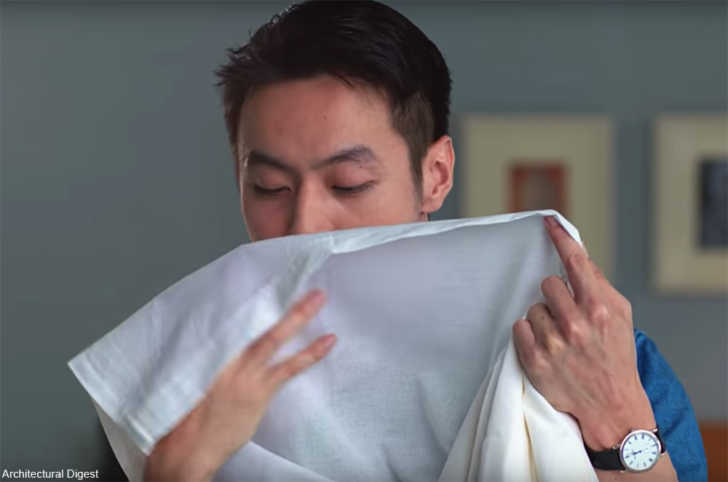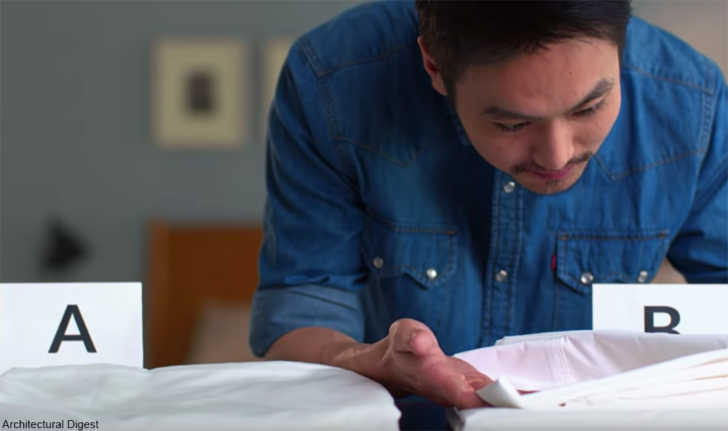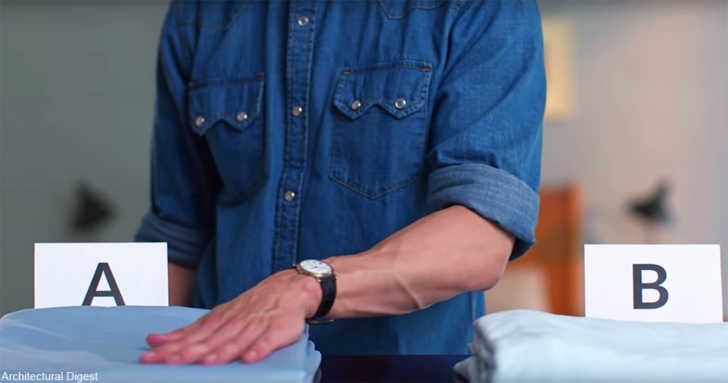How to Look for Good Sheets According to a Bedding Expert
The reasons why thread count matters and what long staple cotton really is.
Leo Wang’s family has been in the business of sheets and bedding for more than 20 years, so he knows a thing or two about sheets. Now, he shares some of his wisdom on the subject when given multiple sheets to test by the folks at Architectural Digest. You might be surprised by some of the methods he uses! Read on for plenty of tips and tricks to help you decide which type of sheets are the best buy for your hard-earned money.

Texture
According to Wang higher thread count cotton has a silkier feeling. Because the weave is tighter and smoother, the texture on skin is more like silk and glides easier. The thread count refers to the number of thread fibers per square inch of the fabric. Higher thread count should also have a slightly “liquid” feeling to it which Wang describes as feeling “like a lotion”. 300 thread count or above is ideal and anything below 200 will most likely feel rather rough.

One test Wang uses, aside from just eyeballing the bedding fabric, is to breathe on the sheet. Your breath will travel through the more open weave of lower thread-count sheets more easily than those of higher thread count.
Higher thread count bedding will usually be more expensive, but will probably also wear better and give more years of service simply because there are more threads. However, in Wang’s estimation there is a limit to how high of a thread count will actually be worth the money in the long term. According to Wang bedding with thread counts of over 600 are probably just marketing gimmicks.
Cotton Fibers
It’s not only thread count which makes a sheet set more comfortable. With cotton bedding it’s the length of each fiber that contributes to a feeling of comfort. Longer fibers create more of a sheen on the surface and don’t wrinkle as quickly. Shorter fibers feel stiff and wrinkle more easily. Higher quality bedding is often made with “long staple cotton” – a term you don’t hear bandied about much these days since so many products are made with short fibers.

Wang also notes that just because a product is labeled as “Egyptian cotton” doesn’t mean it is also long staple cotton. Words to look for on labels include “pima” and “supima” which denote the American version of long staple cotton.
Weave
Most bedding will have a simple grid design (commonly known as percale), but when there is an intricate pattern to the sheets it greatly increases the cost. The reason is it takes more cotton yarn to create an intricate jacquard fabric, not to mention the skill to create the patterns and then program a power loom to make them. Wang says that percale is actually more breathable. So it might worth scrimping in this area for comfort alone, especially if a woven pattern isn’t important to you.

Silk VS. Cotton VS. Synthetics
Natural materials nearly always cost more to produce, so polyester would be cheaper than cotton. Next in price is usually linen, with silk topping the price charts. Despite the fact that silk is nearly always more expensive, linen will usually outlast all of the aforementioned materials and will also get softer with time.

Linen used to be the standard for bedding because it lasted so long that it was handed down from generation to generation. This is why we call bedding linens actually! That being said cotton is far more available and affordable than linen.
Have a look at how to tell different materials and quality in bedding from the expert in the video below.
SKM: below-content placeholderWhizzco for DOT

